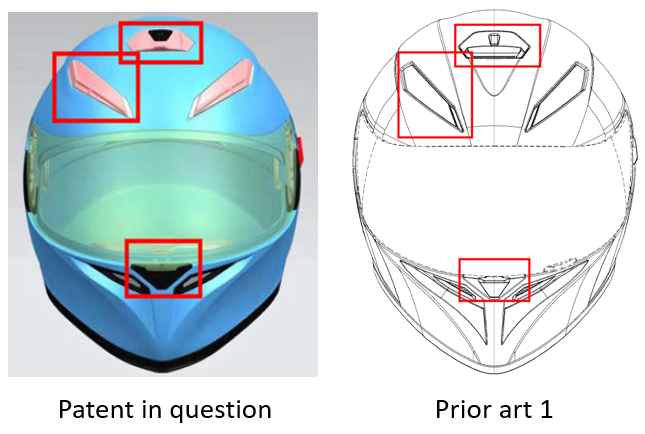- Home
- About Us
- Professionals
- Professionals
- Professionals

- Services
- Services
- Practice Areas
- Information Security

- News
- Database
- Database
- References
- Foundin Cases
- Related Websites

- Contact
Administrative Litigations on Patent Reexamination and Invalidation Decisions in China

Patent Attorney、Attorney at law
Introduction
For a patent application, the Examiner may issue a final rejection if the application is considered unpatentable. If unsatisfied, the applicant may file a request for reexamination within three months after receiving the final rejection. The reexamination decision can be appealed to the People’s Court, given that the applicant files an administrative lawsuit within three months after receiving the reexamination decision.
For a granted patent, anyone can challenge it via patent invalidation in China. The reexamination and invalidation trial department of the CNIPA (PRID) will decide whether the patent in question is valid, invalid, or partially invalid. Upon receiving the invalidation decision, the patentee or the petitioner who is unsatisfied with the decision may file an administrative lawsuit with the People’s Court within three months after receiving the invalidation decision.
In real-life situations, patent invalidations may originate from patent infringement cases. When patentee uses patent rights as weapons, the defendant may fight back by claiming that the patent is invalid. As China adopts a dual-track system, the patent infringement case in court and the patent invalidation in PRID are conducted in parallel. The court may stay the lawsuit if the relevant patent invalidation case is filed. If PRID decides that the patent is invalid, the court will cease the lawsuit. However, for patents which are generally considered stable such as an invention patent, the judge rarely stays the ongoing lawsuit.
The parties can appeal the invalidation decision to the Beijing IP court for an administrative litigation. If the litigation reverses the patent invalidation decision, which may affect the related patent infringement case, the parties may file a new patent infringement lawsuit.
Statistics
According to the 2023 annual report released by Supreme People’s Court, there were 1183 2nd instance patent right confirmation cases with a year-on-year increase of 49.2%. Among these cases, 349 cases are administrative disputes on patent reexamination decisions with a year-on-year increase of 30.2% and 834 cases are administrative disputes on patent invalidation decisions with a year-on-year increase of 58.9%. These numbers and increases may imply that patentees/applicants and petitioners are more active on protecting their rights.
Litigation Types
There are various types of patent administrative litigations in China, which can be classified by defendants. While CNIPA, the department in charge of patent work, the local government, and customs can be defendants in different situations, the litigations we are talking about has the PRID as the defendant.
Legality Review and Rationality Review
Both legality review and rationality review are involved in these proceedings. The judge will conduct a comprehensive review on novelty, inventiveness, enablement of the patent/patent application, and may also consider new evidence before making the judgement.
Legality review finds out issues such as the relevant personnel do not recuse themselves from the legal proceedings, failure to inform the parties of their identities, failure to hold hearings, and failure to render a ruling within the statutory time limit, as well as other violations of due process that cause substantial harm to the parties. Based on the seriousness of the violation, the administrative action may be revoked even if the decision may not be substantively incorrect.
Rationality review, generally speaking, is reviewing novelty, inventiveness, and enablement of the patent/patent application in question. As mentioned, the court will conduct a comprehensive review based on available evidence, and may even consider new evidence that has not been submitted in patent reexamination and invalidation.
Jurisdiction and Claim
The jurisdiction of the 1st instance for such cases is in Beijing IP Court. The 2nd instance of such litigations goes straightly to the Supreme People’s Court.
Claim of such cases usually is asking the court to revoke the reexamination or invalidation decisions based on that the decisions do not comply with procedural and substantive regulations of the relevant law.
Third Party in the Litigation
The litigations are between the petitioner and PRID. Nevertheless, there is another party involved in the previous patent invalidation. That party can serve as the third party in the litigation. The third party stands on the similar position as the defendant and can provide arguments to support the defendant. For example, the third party can prove the accuracy and relevance of the evidence, prove the accuracy of the defendant’s application of the law, and prove that the invalidation decision was correct.
Normally the PRID bears the burden to prove legality of the procedures because they have relevant evidence.
For new evidence submitted in the litigations, the court may accept such evidence provided by the patentee or the patent applicant, however, the court generally will not accept new evidence provided by the invalidation petitioner.
Foundin Case Study
In an invalidation case, we represented the petitioner and did an invalidity search on the design patent in question. The prior art 1 we found resembles the design in question with only minor differences. Based on the invalidity search result and the closest prior art found, the design patent was fully invalidated. The patentee was unsatisfied with the result and appealed the case to the People’s Court.

In the appeal, our attorneys actively participated in the lawsuit as the third party. The PRID, as a government authority, sometimes is reluctant to respond in the court. Instead, our well-prepared attorneys step forward, providing arguments to support the invalidation decision. As a result, the court confirmed the invalidation decision.
New Evidence Submission
While in the past, the court only reviews evidence that has been submitted in the reexamination and invalidation, new evidence submitted in administrative litigation is now more likely to be accepted.
Relevant regulation states that People’s Court should review evidence demonstrating that the patent application should not have been rejected or the patent should remain valid.
Supreme People’s Court’s explanation is summarized below:
New Evidence provider | Proven facts | Court reviews or not | Reasoning |
Patent applicant/ patentee | (1) patent application should have been granted (2) patent right should remain valid | √ | No further available remedies |
Patent invalidation petitioner | patent right should be invalidated | × | a new invalidation request can be filed with the new evidence |
Either party | (1) evidence that does not involve new facts and reasons (2) evidence relates to common general knowledge | √ |
In a Supreme People's Court case, the patentee New Green submitted seven pieces of new evidence in the 1st instance, which was rejected by Beijing IP Court on the grounds that the evidence had not been submitted in the invalidation process and there was no reasonable explanation for the new submission.
The Supreme People’s Court, as the 2nd instance court, reversed Beijing IP Court’s decision based on the relevant regulation. The Supreme People’s Court stated that Beijing IP Court, without any substantive review of the new evidence, rejected the new evidence solely on the grounds that the evidence does not form the basis of the invalidation decision. This finding of Beijing IP Court was wrong. The Supreme People’s Court, after accepting some of the evidence, came up with a judgment in favor of New Green’s appeal.
Take-home Messages
■ 1st instance of patent administrative litigations on reexamination and invalidation decisions is in Beijing IP court and once appeal, the case goes straightly to the Supreme People’s Court, which facilitates more professional judgments.
■ New evidence is now more likely to be accepted in patent administrative litigations on reexamination and invalidation decisions.
■ China’s legal system is continuously improving, especially on IP which is considered a core element of China’s international competitiveness. We suggest that, when necessary, be prepared and actively seek remedies regarding your patent rights in China.



